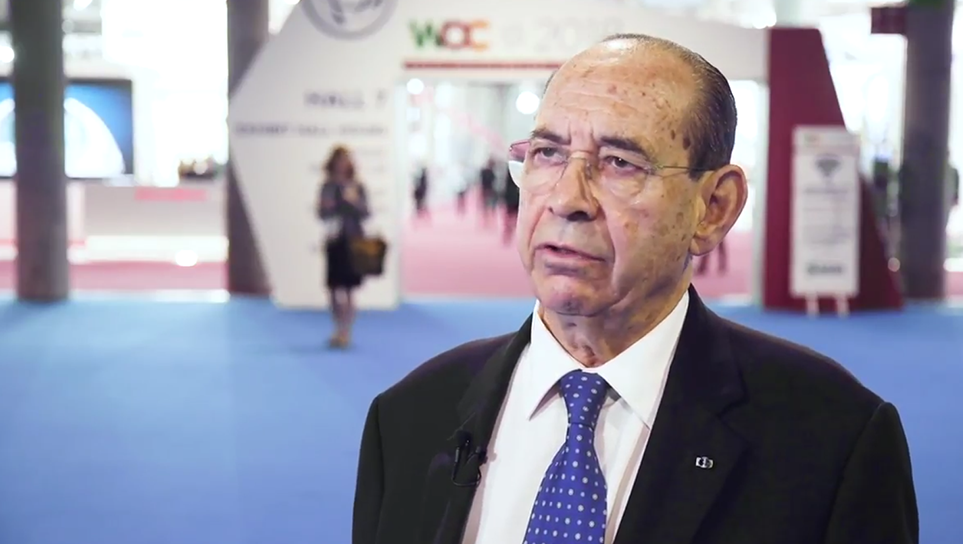The American Academy of Ophthalmology (AAO) 2024 meeting in Chicago showcased many advancements in retinal research that show promise for the future.
 Dr Christine N Kay presented data from the TEASE-1 study, which revealed promising results for gildeuretinol, an innovative drug developed by Alkeus, in slowing the progression of Stargardt disease. Stargardt disease, caused by ABCA4 gene mutations, leads to toxic by-products that damage the macula. Gildeuretinol, an orally administered, molecularly modified form of vitamin A, allows the visual cycle to function normally without producing harmful by-products. The randomised, controlled, double-masked study demonstrated a statistically significant 21% reduction in the growth of atrophic lesions—the hallmark of Stargardt disease—with excellent safety and tolerability. Further studies in the TEASE programme (TEASE-2, TEASE-3 and TEASE-4) aim to expand these results, with top-line data from TEASE-2 expected in 2025. Since the AAO meeting, gildeuretinol has received FDA Rare Paediatric Disease and Fast Track designations for Stargardt disease treatment.
Dr Christine N Kay presented data from the TEASE-1 study, which revealed promising results for gildeuretinol, an innovative drug developed by Alkeus, in slowing the progression of Stargardt disease. Stargardt disease, caused by ABCA4 gene mutations, leads to toxic by-products that damage the macula. Gildeuretinol, an orally administered, molecularly modified form of vitamin A, allows the visual cycle to function normally without producing harmful by-products. The randomised, controlled, double-masked study demonstrated a statistically significant 21% reduction in the growth of atrophic lesions—the hallmark of Stargardt disease—with excellent safety and tolerability. Further studies in the TEASE programme (TEASE-2, TEASE-3 and TEASE-4) aim to expand these results, with top-line data from TEASE-2 expected in 2025. Since the AAO meeting, gildeuretinol has received FDA Rare Paediatric Disease and Fast Track designations for Stargardt disease treatment.
Building on its promise in Stargardt disease, oral gildeuretinol also demonstrated significant benefits in the treatment of geographic atrophy (GA) secondary to AMD, as presented by Dr Alexander Melamud. Results from the SAGA study revealed a 15.3% reduction in GA lesion growth rate from months 6 to 24 (p=0.047) and a clinically meaningful improvement in low luminance visual acuity (LLVA) over 24 months (p=0.031). Gildeuretinol also showed a favourable safety profile, with significantly fewer cases of choroidal neovascularisation compared to placebo, offering a potential new oral therapeutic option for this progressive condition.
Dr Rahul Khurana presented the results of the Phase 2 ARCHER trial, evaluating ANX007, a selective C1q inhibitor for GA in patients with AMD.1 The study randomised patients to receive ANX007 monthly, every other month or sham injections for 12 months, followed by a 6-month observation. At 12 months, monthly treatment significantly reduced the risk of ≥15-letter best-corrected visual acuity (BCVA) loss by 72% (p=0.006) and every other month by 48% (p=0.064) compared with sham. ANX007 also reduced ellipsoid zone area loss by approximately 30% in patients receiving a monthly dose.
Dr Michael Singer presented results from the TRUCKEE study, a real-world, retrospective analysis confirming the efficacy and safety of faricimab for treating neovascular age-related macular degeneration (nAMD).2 The study involved 3,299 eyes from 2,675 patients, examining demographics, treatment history, BCVA, central subfield thickness (CST) and changes in retinal fluid. After one injection of faricimab, patients showed a BCVA increase of +0.47 letters, a CST reduction of −13.58 µm (p=0.0049) and sub-/intraretinal fluid resolution rates of 25.6% and 22.2%. After six injections, BCVA increased by +0.58 letters, CST reduced by −47.05 µm (p<0.00001) and fluid resolution rates improved to 31.2% for subretinal and 24.7% for intraretinal fluid. The rate of intraocular inflammation was low, at 0.07% per injection.
As we reflect on the incredible progress shared at AAO 2024, we encourage you to explore the full meeting programme to learn more about these and other innovative developments. We look forward to seeing how these promising studies evolve and shape the future of retinal care in 2025 and beyond!
References:
- Preservation of Vision by ANX007: Clinical Results and Anatomical Changes From the Phase 2 ARCHER Trial. AAO 2024 Meeting Guide. Available at: https://aao.apprisor.org/apsSession.cfm?id=PO132 (accessed November 25, 2024).
- Real-World Efficacy and Safety of Faricimab in nAMD: Two-Year Results of the TRUCKEE Study. AAO 2024 Meeting Guide. Available at: https://aao.apprisor.org/apsSession.cfm?id=PO585 (accessed November 25, 2024).
Disclosures:
This article was created by the touchOPHTHALMOLOGY team utilizing AI as an editorial tool (ChatGPT (GPT-4o) [Large language model]. https://chat.openai.com/chat.) The content was developed and edited by human editors. No funding was received in the publication of this article.









